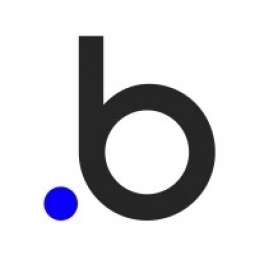Applicable Industries
- Cement
- Cities & Municipalities
Use Cases
- Building Automation & Control
- Smart City Operations
About The Customer
TasteJury is designed for food enthusiasts who are looking for the best food in a city. These could be travelers who are visiting a city for a few days and want to experience the best food, or locals who are looking for new food experiences. The app is also useful for active users who want to contribute to the community by submitting dishes, restaurants/places, and voting on their favorites. These users can also comment on leaderboards and save restaurants to their wishlist. The app is currently available in six cities: New York, Chicago, Los Angeles, Toronto, Austin, and San Francisco.
The Challenge
TasteJury, a restaurant review app, was founded by Aaron Taylor with the aim of providing a bias-free platform for users to find the best food in different cities. The challenge was to create an app that focuses solely on the quality of food, disregarding factors such as service, ambiance, or cost. The app was designed to be particularly useful for food enthusiasts traveling to a city for a few days and wanting to experience the best food. Traditional review platforms like Yelp, Trip Advisor, or food/travel blogs often contain biased or paid reviews, and their focus is not solely on the food. Therefore, there was a need for a platform that could provide reliable and unbiased information about the best food in a city.
The Solution
To address this challenge, Taylor chose Bubble, a no-code tool, to create TasteJury. Bubble provided a complete and flexible solution that allowed Taylor to quickly bring his idea to life. The app allows users to browse a city’s food leaderboards, search for a dish, and check out which places got the highest votes. Active users can submit dishes, restaurants/places, and vote on their favorites. They can also comment on leaderboards and save restaurants to their wishlist. The app was designed to be user-friendly and intuitive, making it easy for users to find the best food in a city. The use of Bubble also allowed for a quick launch, with the entire process from idea to launch taking about a week.
Operational Impact
Quantitative Benefit

Case Study missing?
Start adding your own!
Register with your work email and create a new case study profile for your business.
Related Case Studies.

Case Study
Turning A Stadium Into A Smart Building
Honeywell created what it called the “intelligent system” for the National Stadium in Beijing, China, turning the venue for the opening and closing events at the 2008 Summer Olympics into a “smart building.” Designed by highly controversial artist Ai Weiwei, the “Bird’s Nest” remains one of the most impressive feats of stadium architecture in the world. The 250,000 square meter structure housed more than 100,000 athletes and spectators at a time. To accommodate such capacity, China turned to Honeywell’s EBI Integrated Building Management System to create an integrated “intelligent system” for improved building security, safety and energy efficiency.

Case Study
System 800xA at Indian Cement Plants
Chettinad Cement recognized that further efficiencies could be achieved in its cement manufacturing process. It looked to investing in comprehensive operational and control technologies to manage and derive productivity and energy efficiency gains from the assets on Line 2, their second plant in India.
.png)
Case Study
Smart Street Light Network (Copenhagen)
Key stakeholders are taking a comprehensive approach to rethinking smart city innovation. City leaders have collaborated through partnerships involving government, research institutions and solution providers. The Copenhagen Solutions Lab is one of the leading organizations at the forefront of this movement. By bringing together manufacturers with municipal buyers, the Copenhagen Solutions Lab has catalyzed the development and deployment of next-generation smart city innovations. Copenhagen is leveraging this unique approach to accelerate the implementation of smart city solutions. One of the primary focus areas is LED street lighting.

Case Study
Buoy Status Monitoring with LoRa
The Netherlands are well-known for their inland waterways, canals, sluices and of course port activities. The Dutch Ministry of Infrastructure indicates that there are thousands of buoys and fixed items in and near water environments that would profit from IoT monitoring. One of the problems with buoys for example, is that they get hit by ships and the anchor cable breaks. Without connectivity, it takes quite some time to find out that something has happened with that buoy. Not to mention the costs of renting a boat to go to the buoy to fix it. Another important issue, is that there is no real-time monitoring of the buoys at this moment. Only by physically visiting the object on the water, one gains insight in its status.

Case Study
China Mobile Smart Parking
Smart Parking, powered by NB-IoT technology, is making it easier for drivers to find free parking spots. Cities can better manage their parking assets and maximize the revenue available to them as a result. Drivers searching for parking create congestion and pollution by circling and hunting for available parking. Smart Parking services are able to significantly ease these problems by guiding a driver directly to a parking space.




